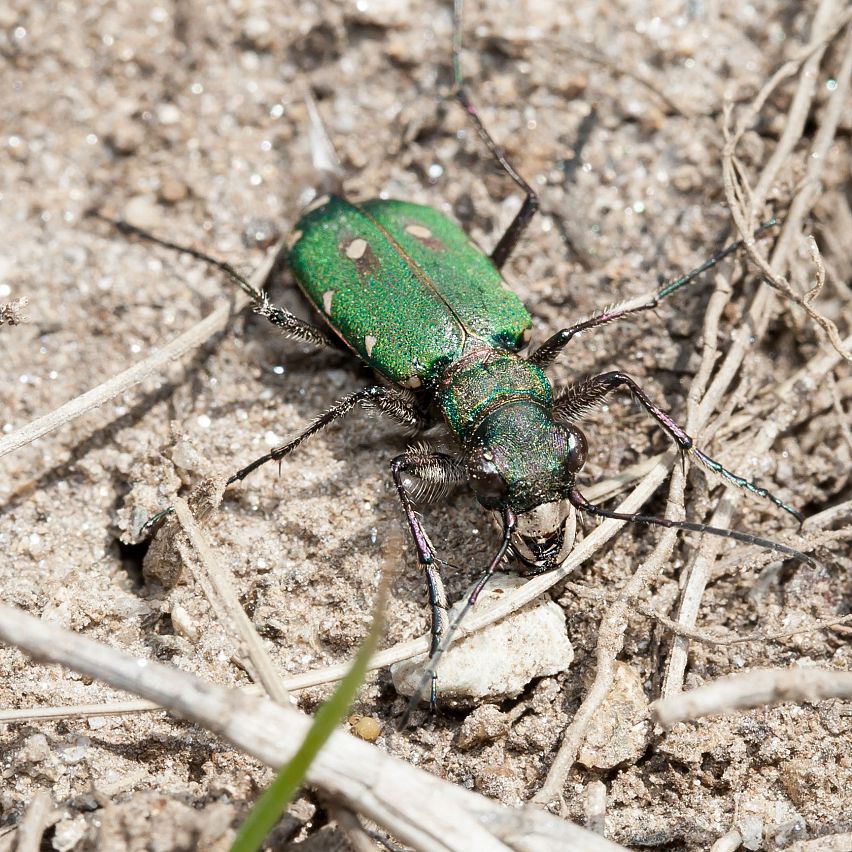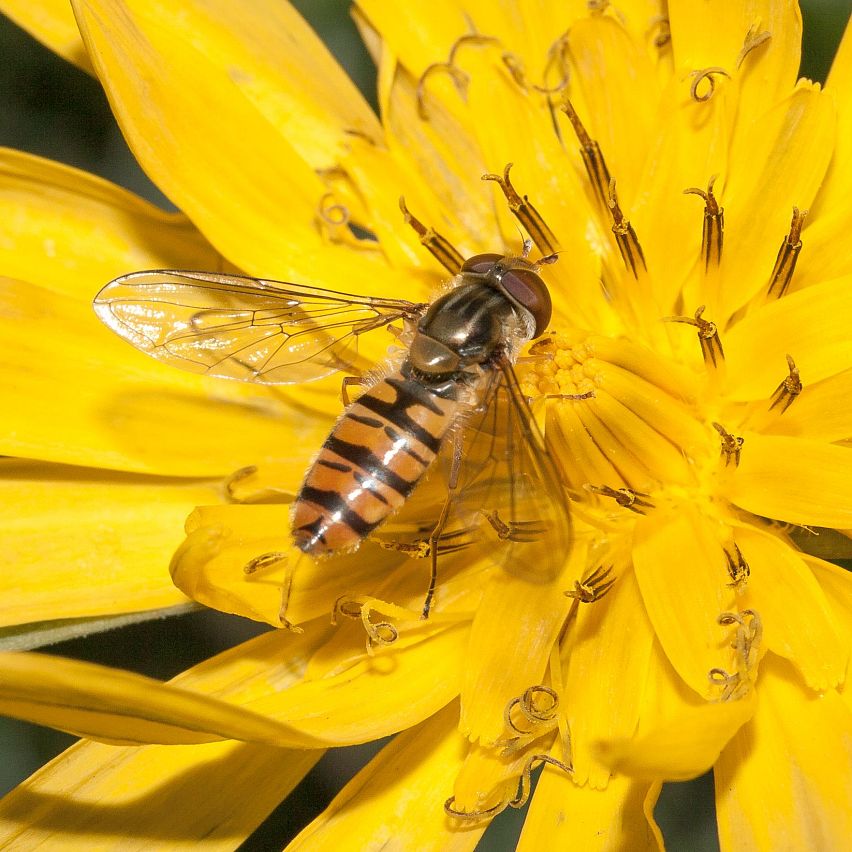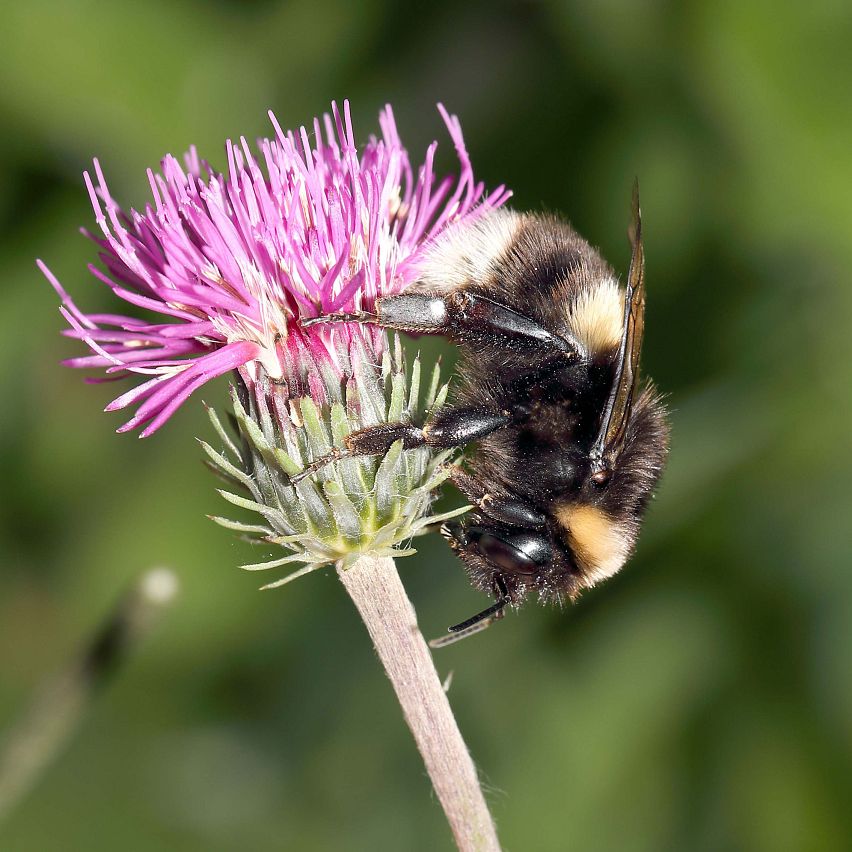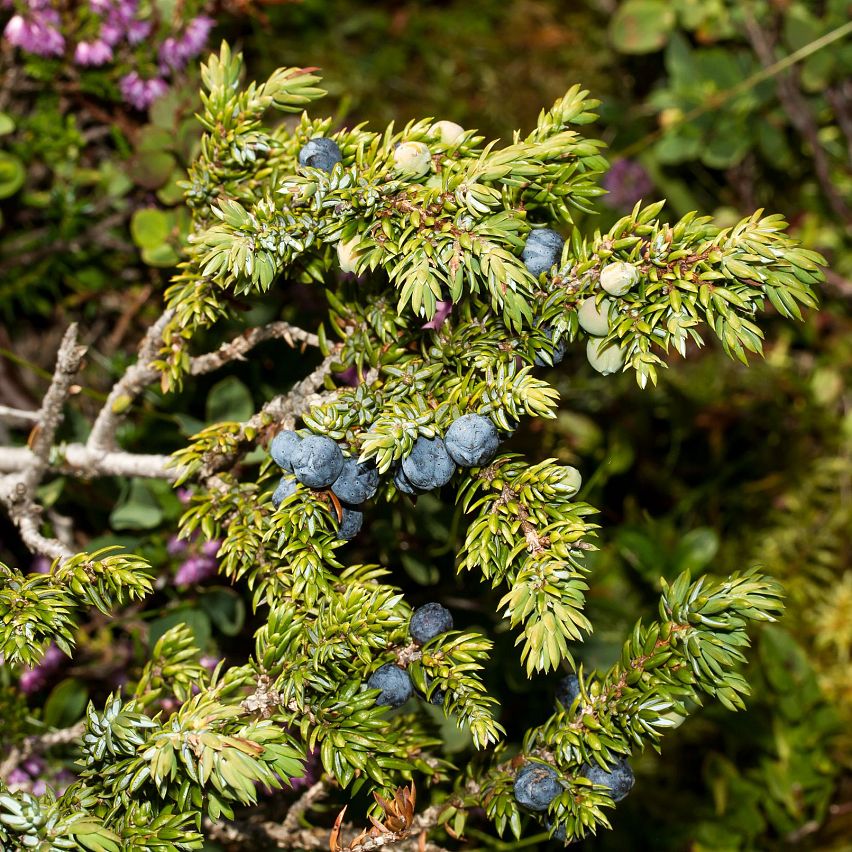Board 3 - At the edge of the forest
The forest edge is the transition between forest and open areas. This is where different zones meet, such as dense, protective forest stands and the food and light areas of the open landscape — a very varied habitat! With their diverse structures, different altitudes, and open soils, natural edge areas such as embankments and edges provide important habitats and meeting zones for countless animal and plant species.
However, these areas are also particularly susceptible to disturbance from various human activities and must be actively protected and preserved!
IN THE RHYTHM OF NATURE
Summer Colonies
Bumblebees and some other wild bees live in small colonies (up to 600 individuals depending on the species). In bumblebees, the mated queen survives the winter—other wild bees usually overwinter as eggs, larvae, or pupae.

THE SWIFT PREDATOR
Field Sandpiper
– Cicindela campestris –
- Characteristics: 10 to 15 mm in size, flat body, usually metallic green in color, light spots on the wing coverts.
- Habitat: Sunny, dry embankments, on paths, at demolition sites, open areas with sparse vegetation, from the lowlands to the mountains.
- Lifestyle: Prey includes arachnids and small insects. It flees at high speed when in danger or flies up a few meters. The larvae live in self-dug tunnels up to 40 cm long.
- Observation Tip: In warm months, often in surprisingly large numbers in open areas, where it quietly lies in wait for its prey.
- Observation Period: April to September.

FLIGHT ARTIST
Grove Hoverfly
– Episyrphus balteatus –
- Characteristics: About 10 mm in size, yellow abdomen with black markings, only one pair of wings, cannot sting (like all hoverflies).
- Habitat: Native to almost all habitats, favors meadows, forest edges, and gardens.
- Way of Life: Eggs are laid on various plants that are heavily infested with aphids. Aphids serve as food during the 10-day larval period, after which they pupate in the form of a drop on a leaf. After hatching, the hoverfly feeds on pollen and nectar—making it one of the most important pollinators of all!
- Observation Tip: "Stand" in the air with up to 300 wing beats per second (similar to a hummingbird), fly forwards and backwards, make a lightning-fast hook in case of danger.
- Observation Time: March to October.

THE FIGHTER
Light-Colored Bumblebee
– Bombus lucorum –
- Characteristics: Only about 30 mm in size, head and proboscis conspicuously short, basket collector, particularly deep buzzing sound with queen.
- Habitat: Almost everywhere, from low valley locations up to 2,000 m altitude.
- Way of Life: Lives socially with summer colonies of 100 to 400 animals. The nests are underground tunnels of mice or other small mammals—with which the queen sometimes fights for the nest site and usually wins!
- Observation Tip: Undemanding in its choice of flowers, often found on clover and cicely, black nettles, willows, and fruit trees.
- Observation Period: March to August.

THE AROMATIC
Common Juniper
– Juniperus communis –
- Characteristics: Up to 3 m high, grows as a shrub or small tree, evergreen, very pointed and aromatic needles, seeds inside the fleshy cones, initially green berry, typical black-bluish color after 2 years.
- Habitat: Pine forests, pastures, rocky slopes, and in the dwarf shrub heath vegetation type up to 2,300 m.
- Uses: The berries contain numerous essential oils. It has been used since ancient times in medicine and as a spice (e.g., in sauerkraut) as well as in the production of juniper schnapps (known as Kranewitter or gin). The slow-growing wood is valuable for woodturning.
- Observation Tip: Recognizable by touch - the pointed needles leave no doubt!
Tyrolean Kranewitter Search Game!
On this board, we present the juniper (also called Kranewitter in Tyrol). There are juniper bushes in the forest in the immediate vicinity of this board—can you find them?